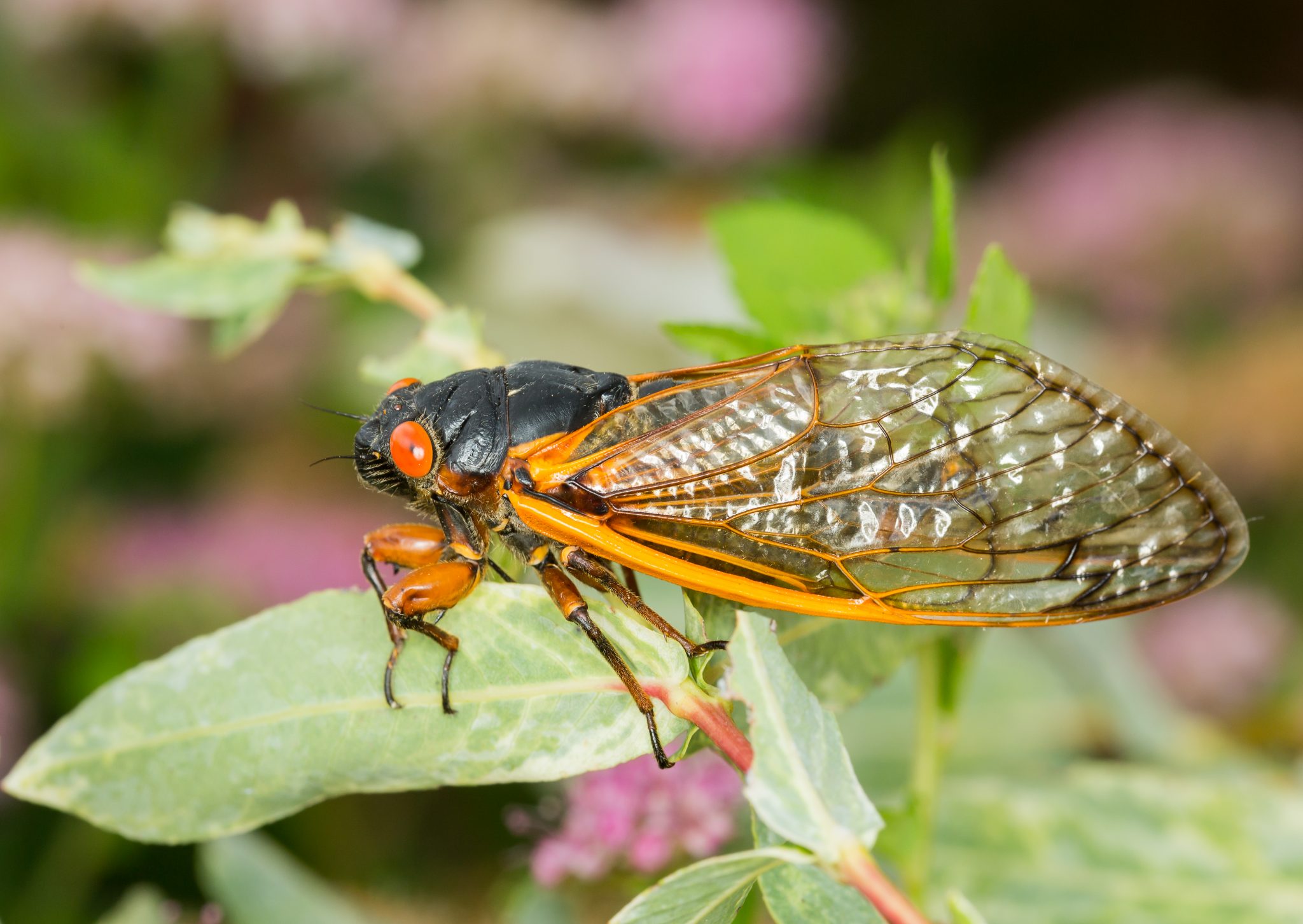It’s been 17 years since a particular type of cicada has been above ground, so you are forgiven if you don’t remember what to expect when they emerge — and they’re already starting the process.
According to experts, this group of cicadas (dubbed “Brood X”) will generally start pushing their way through the ground in at least 15 states — including Indiana — when the soil temperatures hit 64 degrees, and the late spring rains will help that process along.
What Can You Expect Once the Cicadas Emerge?
When they first emerge from the ground where they’ve been quietly feeding on plant sap for nearly two decades, the cicadas will be white. Soon, however, they’ll shed their old skins and develop a distinctive yellow and black exoskeleton.
While cicadas don’t actually swarm, they do tend to gather in large groups around sources of shelter and nourishment, like trees, and that gives them a swarm-like appearance. Once you spot them, you can expect to see the cicadas for about six weeks, as they court their mates, lay eggs and die — before their progeny fall from the trees and head back underground to repeat the cycle.
Folks, it’s about to get loud.
Technically, only the males make noise as part of their mating call to females in the brood, but these anxious would-be suitors are capable of hitting the 100-decibel mark with the whirring, clicking and other vibrations in their “song.”
For comparison, that’s about the same noise level you can expect from a motorcycle revving its engine or a low-flying plane overhead. Typically, the cicadas do all their singing during daylight hours, so they won’t interrupt your sleep at night — but you may want to invest in earplugs if you work at home during the day or plan to spend much time outside for the next few weeks.
Why Are Some Areas Seeing More Cicadas Than Others?
Maybe you’ve already seen a pile of cicadas emerging in your yard — but your neighbor hardly has any.
What gives? Well, several different factors can affect how many cicadas from Brood X emerge in any specific spot.
Changes in the landscaping over the last 17 years, for example, could have deprived the burrowing cicadas of the nutrients they need to survive in one yard or another, reducing their population. Broad environmental changes and urbanization may also have reduced the number of cicadas that emerge this year — which is something that scientists are watching.
Differences in soil temperatures can also affect how fast the cicadas emerge. Parts of the midwest have had unseasonably cool temperatures — and that will signal to the cicadas that it’s not quite the optimum time to start their hunt for a mate. Even something as simple as the number of trees your neighbor has in their yard could keep their soil cool longer and cause a delay in the cicadas’ routine.
Are the Cicadas Dangerous to You, Your Property or Pets?
If you’re not particularly fond of insects of any sort, the mass numbers of cicadas you see may give you pause when you step outside — but they’re pretty harmless. They neither bite nor sting.
In fact, the only real defense the cicadas have is their sheer numbers. As far as the birds and numerous other wild animals are concerned, the cicadas are something akin to a special treat that’s been 17 years in the making, and they’ll definitely chow down on as many as they can while they’re here.
If you have a cat or dog, you can absolutely expect your pet to go chasing and chomping after the cicadas they find in your yard — and it’s fine to let them. They won’t get hurt or get sick from snacking on a few, although you shouldn’t let them eat too many at once. The exoskeletons are crunchy and fun for your pet to gnaw on, but they can be difficult to digest.
Generally speaking, the cicadas won’t leave any lasting damage to your trees and plants. They do drink sap, and they do leave their eggs behind on the branches, so that can be a temporary cosmetic problem before the cicadas eventually return to their burrows.
Can You Get Rid of the Cicadas with Commercial Products?
Okay, the cicadas are a fabulous wonder of nature and ingenuity — but they’re also loud and annoying. It’s okay if you don’t really appreciate them.
Just the same, experts say that you should skip the bug spray, grub killer and pesticides. Not only are bug killers unlikely to be effective on Brood X, but they’re also more likely to injure the insects that keep your garden healthy (and, possibly, your pets). After the cicadas are gone, you can give your beleaguered trees a little extra mulch, fertilizer and water to help them recover their beauty.
There is one (slightly gross) issue that we probably should mention, however: Cicadas do have a habit of squirting a type of sugary fluid at anything that they might see as a threat — including people. If you’re going to be out in your yard or plan on strolling through the woods while the cicadas are out, you may want to throw on some long sleeves and a hat.
Can You (or Should You) Eat the Cicadas?
You may have noticed all kinds of recipes popping up on your social media pages for everything from chocolate-covered cicadas to tempura dishes, but is it really “a thing” to make a meal out of cicadas?
Cicadas, like other insects of their nature, are packed with protein — and they’ve been used as a food source by humans for centuries. Experts have even pointed out that the insects are low-fat, low-carb and gluten-free.
Just the same, Western communities have a pretty strong cultural aversion to eating insects, so it’s mostly up to you if you decide to try out a recipe or two. If you can get past the “ick” factor and want to give it a whirl, chefs recommend that you gather the cicadas up while they’re in their mostly white “nymph” stage and still chewy — before they develop that hard exoskeleton. It’s also strongly recommended that you never eat any type of insect raw. Thoroughly cooking cicadas before consumption will reduce the risk of parasites, which can be deadly.
That’s it! That’s all you really need to know about Brood X and the 2021 Invasion of the Cicadas. By the time Labor Day rolls around, they’ll all be gone and it’ll be 17 more years before the next round of cicadas emerges.




